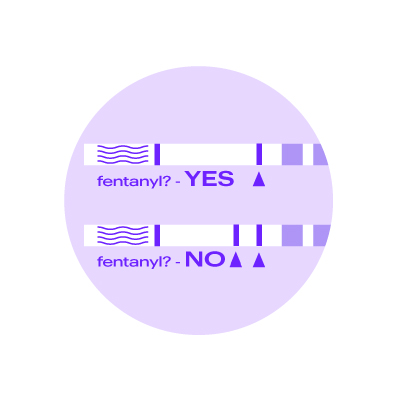Use safer.
Everyone deserves access to overdose and disease prevention. Find free naloxone, fentanyl test strips and sterile syringes near you.
Find LocationsStore locator is loading from StoreRocket Store Locator Widget..

Volunteers

Recovery Housing

Community Health Center

Syringe Services Programs

Library

Community Based Organization

Substance Use Treatment

Health Department

Church

Substance Use Prevention Coalition

Food Bank

Behavioral Health

Recovery Meeting

Emergency Services

Youth Center

Get supplies by mail
If you're not comfortable picking up supplies in person, you can get them mailed to you anywhere in Arizona.
Request Supplies

Don't Hesitate to Call 911
In Arizona, we have a Good Samaritan law (Arizona Revised Statutes 13-3423). It means that if someone is experiencing an overdose or calls 911 about an overdose, they can’t be charged with possession or use of a controlled substance or paraphernalia.
Additional Resources
Get more information on how to use naloxone to reverse and overdose, how to test for fentanyl and how to inject safer.
How to Use Fentanyl Strips
Using Naloxone to Stop an Overdose
If you believe someone is overdosing, it's important to act immediately. Naloxone reverses opioid overdoses, but it won't harm someone who's taken a different drug. So, you should always give naloxone, even if you don't know what kind of drug was taken.
How to Inject Safer
Keep Your Kit Fresh
Sharing equipment can lead to HIV or hepatitis C infections.
So always use your own kit and make sure all your supplies are clean (cooker, spoon, tourniquet).
If possible, use a fresh syringe and filter every time. If you absolutely have to reuse a syringe, wash it with cold water, bleach and then water again.
Don't lick the needle, it will transfer bacteria from your mouth, which can cause infection.
Your hands are part of your kit too, so make sure to wash your hands with soap and water or an alcohol pad. Then wipe the injection area with an alcohol pad, wiping in one direction.
Find a Vein, Not an Artery
To find a vein, use your tourniquet a few inches above the injection site. The tourniquet will help plump the vein up.
Before you inject, test to ensure you've hit a vein and not an artery by pulling back slightly on the syringe. If the blood is dark red, you've hit a vein.
If it's bright red, frothy and you feel it pushing back against the plunger, you've hit an artery. Take the syringe out, apply pressure and raise the limb before seeking medical attention.
Managing Skin Infections
Skin infections can happen while injecting if the skin isn't properly cleaned, non-sterile equipment is used, your drugs are contaminated, or a shot is missed.
If you miss a shot, make sure to apply ice, or any available frozen item, to the site and elevate the limb. If you see swelling the next day, apply heat using a cloth soaked in hot water.
Avoid injecting around, or below, an infection. And don't squeeze or poke an abscess if it forms. This can add more bacteria to the wound and make it worse.
Signs your injection site might be infected include: swelling, redness around the edges, pus, bad odor or smells, pain or loss of feeling, fever/chills.
If you are experiencing fever, chills, extreme fatigue or pain, get medical help. You might have a blood infection, which could be deadly.












